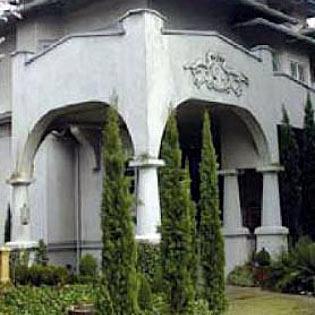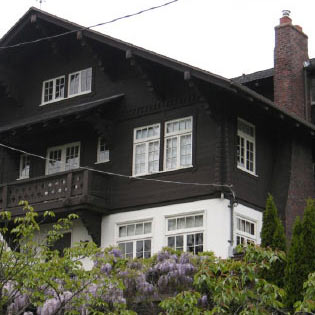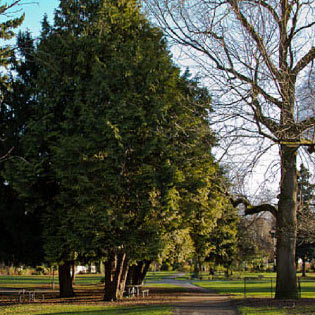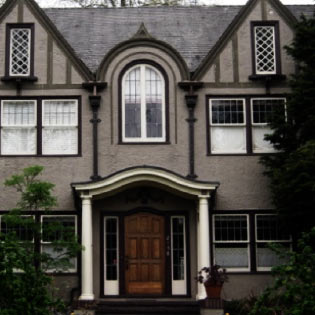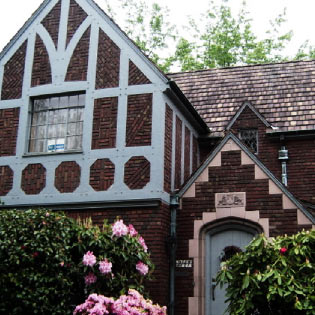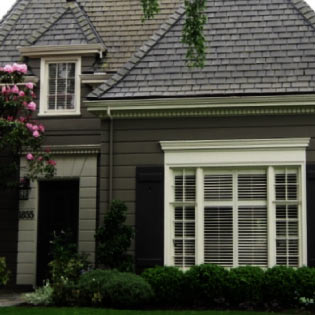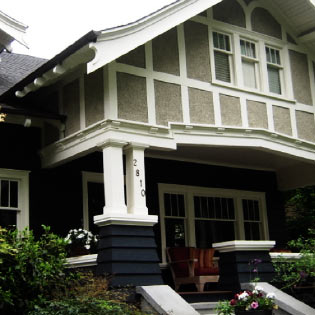AUDIO
MP3 Download: Listen to Julie Meredith, P.E., SR 520 Program Manager at the Washington State Department of Transportation, talk about the evolution of the SR 520 Corridor.
RESOURCES
- SR 520 I-5 to Medina Project Cultural Resource Discipline Report (pdf 4mb)
- Roanoke Park Historic District National Register Nomination Form (pdf 4mb)
Links to external websites do not constitute endorsement by WSDOT of the linked websites or the opinions, information, products or services contained therein.
T he SR 520 corridor bisects or is adjacent to literally hundreds of significant cultural and historic resources, including two historic districts. These historic and cultural resources were identified during the Section 106 of the National Historic Preservation Act (NHPA) evaluation for the project. The two historic districts within the project area are the National Register-listed Roanoke Park Historic District and the Montlake Historic District.
The Roanoke Park Historic District is roughly bounded by East Roanoke Street, Harvard Avenue East, East Shelby Street, and 10th Avenue East, the district includes 101 properties, 80 of which contribute to the historic district. The district’s significance began in 1889 (the earliest construction date) and ended in 1939, by which time most of the lots had been developed. The greatest number of houses in the district were constructed between 1908 and 1910. The historic district contains a variety of architectural styles, including the Colonial Revival, Neo-classical Revival, Tudor Revival, Mission/Spanish Revival, English Arts and Crafts, Craftsman, American Foursquare, Italian Renaissance, French Norman Revival, and many others. In addition to its architecture, the Roanoke Park Historic District is notable for its park and landscape, both of which are considered contributing features. The NRHP nomination (pdf 4.1mb) describes Roanoke Park as “the district’s jewel, a 2.2-acre, green gateway” to the neighborhood.
The Montlake Historic District was determined eligible for listing in the National Register of Historic Places due to individually eligible properties as well as hundreds of contributing properties. The Montlake Historic District is historically significant as a cohesive collection of intact architectural styles, which represents the development of early twentieth century Seattle and the distinct design styles that typified this period, including Craftsman, Tudor, and Colonial Revival. The historic district contains a combination of distinctive builders’ houses, high-style, architect-designed residences, and impressive nonresidential structures, with a very low level of intrusions. The period of significance is 1905 to 1952, from the platting of the neighborhood to the construction of the former Museum of History and Industry (MOHAI) building.
Although the Montlake neighborhood was bisected by the construction of SR 520 in the early 1960s, most of the neighborhood remains intact. Many of the individual buildings have experienced minor alterations, such as window replacements and rear additions. Most of these changes, however, do not detract significantly from the integrity of the individual properties or of the district as a whole. Only a small number of the buildings have been highly altered, and no longer contribute to the historic district. However, the percentage of these noncontributing elements in the historic district is low.
As part of the Section 106 Programmatic Agreement (pdf 2.4mb), WSDOT made specific commitments to help protect historic communities and cultural resources, and to document what will be affected by the project. Some of these key commitments include the following:
- Consult with affected tribes and the Arboretum Botanical Garden Committee (ABGC) on plans for the Foster Island area.
- Implement measures to help ensure design consistency with the Olmsted plan for Seattle’s parks.
- Implement measures to help enhance and ensure compatibility with the historic character of the Roanoke Park and Montlake Historic Districts.
- Develop a Community Construction Management Plan to support best practices and good communication to minimize construction impacts on historic properties and members of the public.
